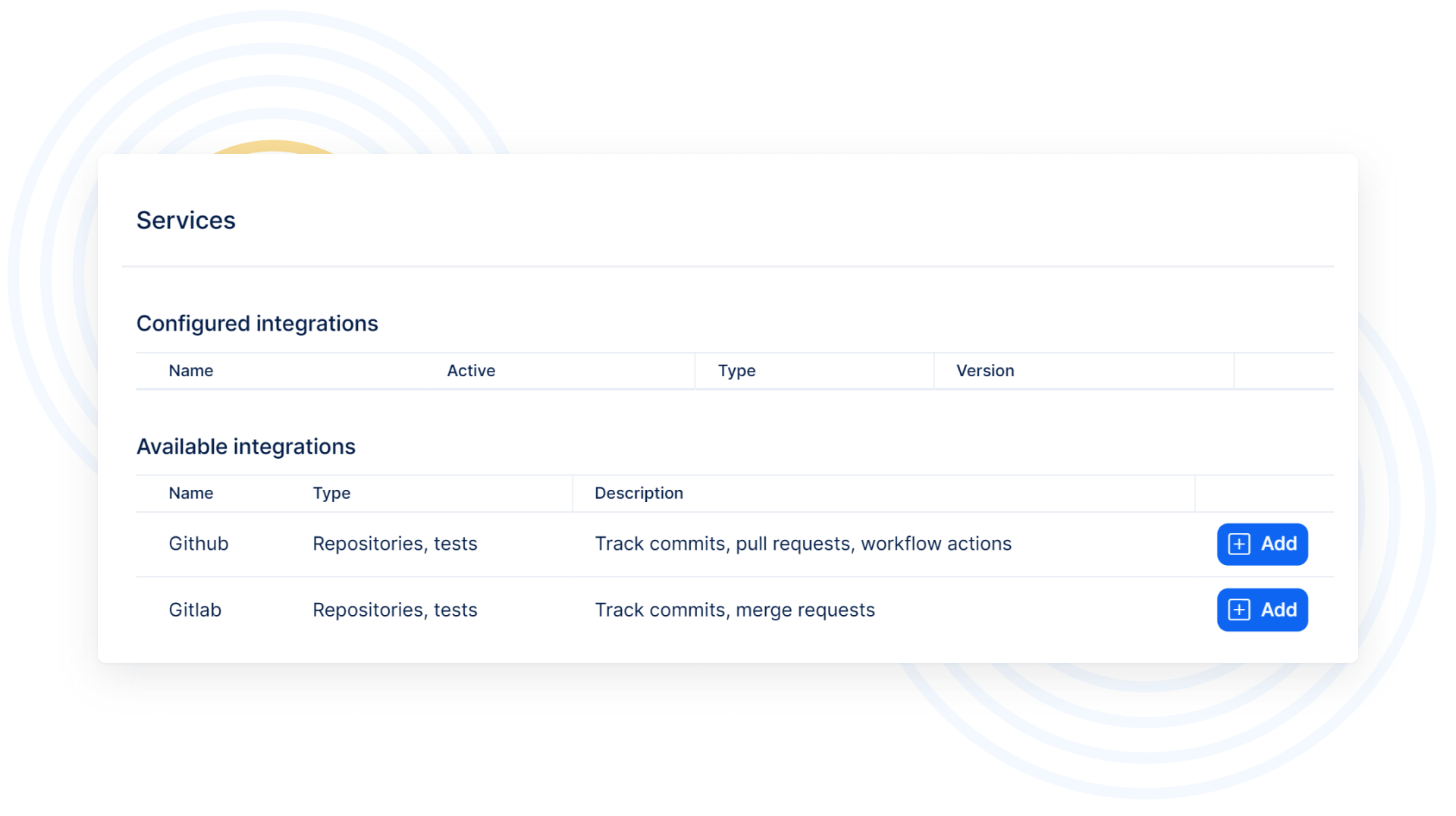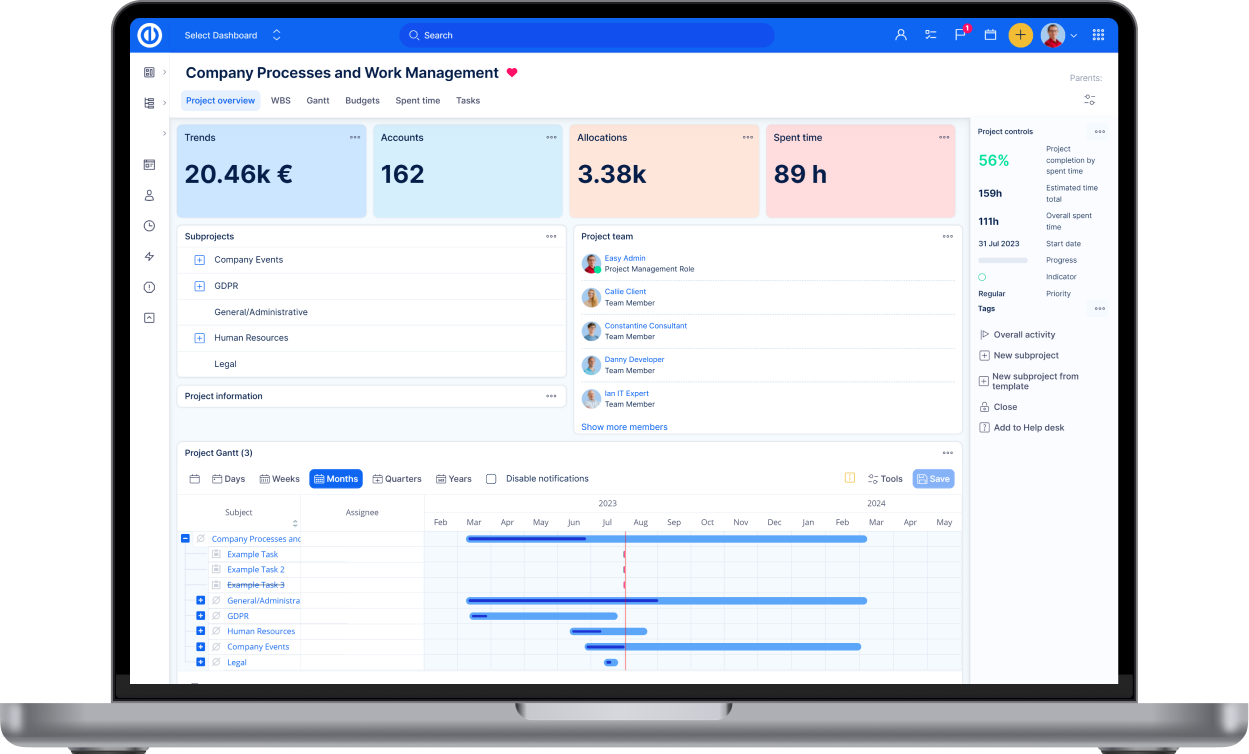How to build an enterprise API strategy in 8 steps
Businesses rely on PM tools such as Easy Redmine to communicate with other software platforms.
However, how can a company make its sensitive and valuable information and computing power available to numerous potential customers without disclosing the underlying source code and working with many contributors?

Table of contents
How does API influence business strategies?
Steps to build an enterprise API strategy
1. Define your API goal
2. Establish developer guidelines
3. Engage with developers
4. Collaborate with a business sponsor
5. Deploy the required IT infrastructure
6. Develop a technology roadmap
7. Promote APIs
8. Identify the key metrics
Complex PM software for building API strategies
API or application programming interface provides possible interactions between independent software components that deliver and request services without prior knowledge. The implementation of complex interactions is made simple by this abstraction layer.
How does API influence business strategies?
The development and maintenance of APIs have become crucial components of business strategy as companies rely on software-based services to earn income. The API economy refers to a company's ability to access, process, and provide data. It also generates revenue from those actions indirectly through increased efficiency or sales. For example, physical products cannot be generated, changed, or used as quickly as APIs.
Steps to build an enterprise API strategy
Your APIs will only provide enough business value with a carefully thought-out roadmap. If your consumers, partners, or outside developers find it difficult to use your APIs, they might damage your brand's reputation. That’s when you use a project management tool such as Easy Redmine to outline your business technology and roadmap.
Here are 8 crucial planning factors to think about as you take on the challenges of creating an enterprise API strategy for your company:
1. Define your API goal
Start with what the business expects your APIs to do before defining the vision of your corporate API strategy:
- Simplify the process for customers to buy goods and services.
- Improve the user experience for visitors to your website.
- Ease the way to deal with customers and clients.
- Enable quicker task completion for internal developers by facilitating workflows.
The chosen business strategies should then guide the API strategy in the future. Additionally, you can choose technologies based on how well they complement your API strategy.
Promoting APIs' value across your entire organization is a key step in establishing the vision for your API enterprise strategy. Make sure everyone understands how crucial APIs are to your company's smooth operation. This will make it easier for internal team members who are in charge of creating, implementing, and maintaining APIs to receive the full backing of the organization and achieve their goals.
2. Establish developer guidelines
So that developers can construct APIs that range in size and complexity, programs must continue to be agile and adaptable. Additionally, you must uphold standards to prevent your API ecosystem from becoming too challenging to manage, especially as roles shift and additional personnel join the API team.
Create methodology rules for API coding development, security, deployment, testing, and management using the open-source tool Easy Redmine to achieve a balance between innovation and control.
3. Engage with developers
Easy Redmine, with its versatile customization options, is a powerful communication tool for businesses. You can create an ecosystem or community to engage with developers and clients. Establishing an active developer community is crucial to the success of an API program. For example, portal and email push campaigns connect the developers who build and maintain the APIs with the developers who use them.

Gitlab integration
Make it simple to publish and locate APIs, and provide Easy Redmine access for developers to discuss documentation, release notes, coding techniques, and use cases. This paves the way for the entire community to build an ecosystem that naturally encourages API usage and improvement.
4. Collaborate with a business sponsor
Although a technical team will create, implement, and maintain APIs, it's equally essential to work closely with the principal business owner of each API. This person must lend their support to the effort and aid in highlighting the API's benefits to the company. Depending on how well the API functions, the sponsor is the one who ultimately stands to gain or lose the most within the organization.
The API product manager may ensure that APIs receive all the attention and resources they require with the aid of a good sponsor. Easy Redmine allows instant collaboration and communication with developers and business sponsors.
5. Deploy the required IT infrastructure
Your API is the front of your product that, ideally, will surprise developers and end customers who use it. However, don't overlook the back-end IT infrastructure that powers your API and ensures that it continues to function even as usage grows. So it's crucial to design an infrastructure that can expand when there are sudden increases in workload.
6. Develop a technology roadmap
The functionality you design for your APIs will eventually become outdated as supporting technologies advance and your rivals find new ways to integrate application services, as is the case with all technologies. Maintaining your internal team's training on the most recent API skills will enable them to implement those anticipated changes and develop one, three, and five-year product roadmaps. Regularly evaluate and modify the roadmap plan with Easy Redmine.
7. Promote APIs
By including API listings in marketplaces and app stores, you may make things simpler for developers. Also, consider giving the API evangelist position to a technical resource with excellent communication skills. For example, someone with technical skills will better connect with the developer community you hope will use the APIs. To promote the APIs, the employees should be proficient in social media and blogging and participate in developer forums. Additionally, they must respond quickly to developers' questions and help organize technical support requests.

API body available integrations
8. Identify the key metrics
Identifying the important metrics that enable you to evaluate and show the organization the performance of your APIs is crucial for any technological project. For example, calculate the call request speed and direct and indirect income production in addition to the number of developers using the APIs and the number of API calls (if applicable).
Uptime and mistakes produced are two other important factors to measure. First, find out if developers are participating in the developer community and reading your documentation, even though feedback comments can be difficult to quantify. It is beneficial to ask end users if they believe that operations are running well. Look at your Net Promoter Score to see how an API affects it.
Complex PM software for building API strategies
Easy Redmine, a universal project management system, is an excellent tool for building API strategies for enterprises. It has a complex Easy Redmine API that enables integration with other systems. Since it is open-source, developers can customize it according to business requirements. No matter what developer audience will use your API, you must ensure you control who has access. Easy Redmine will help you organize and monitor the APIs.
Still hesitating? Try Easy Redmine for at least 30 days and get valuable insights on how this PM tool can improve your efficiency.



